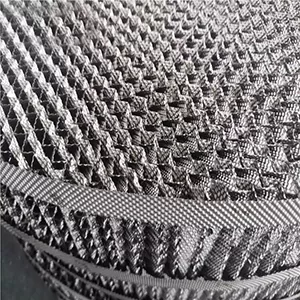Can structured packing Improve Product Content?
Yes, structured packing can significantly improve product content in industrial separation processes, particularly in applications such as distillation, absorption, and extraction where purity and concentration of the target product are critical. Its design and performance characteristics directly contribute to enhancing product content by optimizing mass transfer efficiency and separation precision.

Structured packing’s regular, ordered structure—typically composed of corrugated sheets, meshes, or grids arranged in uniform patterns—ensures superior gas-liquid contact and distribution. Unlike random packing, which may suffer from uneven flow or channeling, structured packing creates consistent, well-defined pathways for fluids. This uniformity allows for more thorough interaction between the gas and liquid phases, maximizing the transfer of components and enabling more effective separation of target substances from impurities.
The high mass transfer efficiency of structured packing is a key factor in improving product content. Its large specific surface area, combined with low pressure drop, facilitates greater contact between the phases, promoting the diffusion of desired components into the product stream. For example, in distillation processes, structured packing enhances the separation of volatile components, leading to higher-purity distillates with increased content of the target product. This is especially valuable in precision separation tasks, such as the production of high-purity chemicals or pharmaceuticals, where even small improvements in content can significantly impact product quality.
Additionally, structured packing’s ability to operate effectively at lower pressure drops reduces the risk of thermal degradation in heat-sensitive materials. This stability ensures that the target product retains its integrity during separation, avoiding losses that could lower its final content. In vacuum distillation or low-temperature separation processes, this advantage is particularly pronounced, as structured packing maintains efficiency without compromising product quality.
However, the extent to which structured packing improves product content depends on other process parameters, such as operating conditions (temperature, pressure, flow rates), feed composition, and the type of structured packing used. Proper design and selection—matching the packing’s characteristics to the specific separation requirements—are essential to achieving optimal results. For instance, mesh or corrugated plate structured packing may be preferred for fine separations, while larger-scale processes might benefit from high-capacity structured packing designs.
In summary, structured packing enhances product content by improving separation efficiency, ensuring uniform phase contact, and minimizing losses during processing. When correctly applied to suitable separation tasks, it is a valuable tool for increasing the concentration and purity of target products in various industrial applications.

